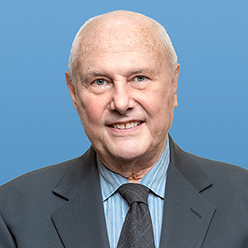Between the founding of the Kennan Institute and my departure in the last days of 1979, the Soviet Union was ruled by the turgid Leonid Brezhnev. Dissidence had peaked, the Brezhnev constitution disappointed, and the Kremlin’s military buildup gained pace. It was in this environment that the Institute quickly became Washington’s premier locale for analysis and discussion of everything pertaining to the USSR. Thanks to the Wilson Center’s unique arrangement with the Library of Congress, where you could order a book and have it delivered to your desk, the Kennan Institute became a magnet for top scholars worldwide. The diversity of disciplines, nationalities, and outlooks offered an unparalleled locus for serious discussions.
Arguably our most significant achievement during those years was the successful effort to foster unmediated contact between Western scholars and Soviet social scientists working in the vast network of the Soviet Academy of Sciences. The effect was like opening the window of a sealed room and produced ripples right up to Nikolai Baibakov, head of the USSR’s State Planning Committee (known as Gosplan) and an Institute guest. He doggedly believed that main-frame computers would enable the Gosplan to manage the entire economy from one central point, but his visit and contact with American computer users helped disabuse him of this, and later led Russia to abandon many of its centralized planning tools.
Such achievements of those early years inevitably lived alongside shortcomings. One flaw was the scarcity of sociologist fellows. The Soviets rejected most sociologist exchange applicants, which left the Institute with little to advance this important area of studies.
We did much in the study of Russian literature and dissident art—but largely neglected film, music, and dance. We barely touched religion, even though the spiritual life of Soviet citizens was increasingly in turmoil.
Understandably, George Kennan’s views on the USSR directly impacted the Institute’s choice of fields pursued there. Even though there was evidence of social restiveness in many of the non-Russian republics, the Institute largely ignored these regions of the USSR during its first decade. A prime reason for this was that to study them requires focused training in local languages and a specialized knowledge of their cultures. Fortunately, at Ohio State University, Indiana University, and especially the University of Chicago under Professor Alexandre Bennigsen, these studies gradually took hold. But the process was slow and barely affected the Institute in its early years.
It is ironic that the Institute has expanded its scope to include the now-independent states that it neglected when they were ruled by Moscow.
The same focus that caused the Institute to neglect the non-Russian republics of the USSR in its early years led it to undervalue the diverse regions and people within the Russian Republic. Moscow’s policies at the time prevented most students of regionalism within Russia from traveling abroad, which enabled few Americans to pursue such subjects in Russia. As a result, both the Soviets and the Americans nurtured an image of the USSR and of Russia that was less diverse and more monolithic than was true.
A final area where the Institute might have done better during the 1970s was arms control and security. By mid-decade, the debate between hawks and doves had already erupted. Kennan, an arch dove, wanted to distance himself from the noisy exchange—and certainly did not want to give a platform to Paul Nitze or to Harvard’s Richard Pipes. There was concern that, had we given prominence to any of the hawks, the Soviets would end all contact immediately. It was a form of self-censorship to which the Institute tacitly engaged, but I still ask myself if we did enough to air both sides of the era’s most vexing questions.
